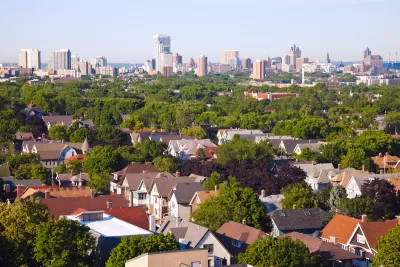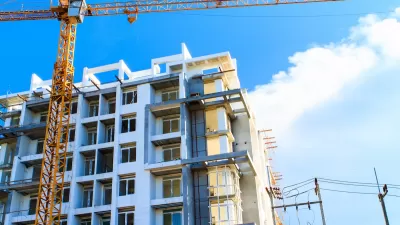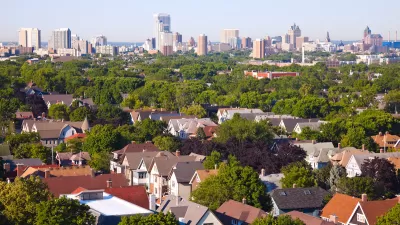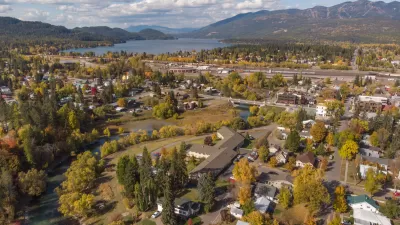The ‘Growing MKE’ plan calls for allowing ADUs, reducing barriers to new construction, and expanding the types of housing available in the city’s residential areas.

A proposal dubbed ‘Growing MKE’ would expand the types of housing that can be built in Milwaukee and streamline the permitting process for residential development, reports Jeramey Jannene in Urban Milwaukee.
The proposal, created by the Department of City Development (DCD), anticipates that the city’s population will grow from roughly 600,000 to one million and follows other cities that are using zoning reform to stem the housing affordability crisis and improve mobility and sustainability.
As Jannene explains, “A key component of the plan calls for expanding the number and types of buildings that can be constructed without legislative approval, instead allowing code-conforming projects to advance through what is commonly called ‘by right’ development.” This would include accessory dwelling units (ADUs), duplexes and triplexes, and other higher-density buildings in certain corridors.
“Growing MKE does not call for any changes to the zoning map, which governs how individual parcels can be developed, but instead calls for modifying components of the zoning code that regulate how density limits are calculated and what requires discretionary approvals,” Jannene adds. The proposal calls for other changes such as eliminating parking minimums along transit routes and limiting the need for hearings when approved projects make “minor modifications.”
The plan will undergo review by the Common Council’s Zoning, Neighborhoods & Development Committee and later go before the full council.
FULL STORY: Changes To Milwaukee’s Zoning Code Would Encourage More Development

Study: Maui’s Plan to Convert Vacation Rentals to Long-Term Housing Could Cause Nearly $1 Billion Economic Loss
The plan would reduce visitor accommodation by 25,% resulting in 1,900 jobs lost.

North Texas Transit Leaders Tout Benefits of TOD for Growing Region
At a summit focused on transit-oriented development, policymakers discussed how North Texas’ expanded light rail system can serve as a tool for economic growth.

Using Old Oil and Gas Wells for Green Energy Storage
Penn State researchers have found that repurposing abandoned oil and gas wells for geothermal-assisted compressed-air energy storage can boost efficiency, reduce environmental risks, and support clean energy and job transitions.

Private Donations Propel Early Restoration of Palisades Playground
Los Angeles has secured over $1.3 million in private funding to restore the Pacific Palisades playground months ahead of schedule, creating a modern, accessible space that supports community healing after recent wildfires.

From Blight to Benefit: Early Results From California’s Equitable Cleanup Program
The Equitable Community Revitalization Grant (ECRG) program is reshaping brownfield redevelopment by prioritizing projects in low-income and environmental justice communities, emphasizing equity, transparency, and community benefits.

Planting Relief: Tackling Las Vegas Heat One Tree at a Time
Nevada Plants, a Las Vegas-based nonprofit, is combating the city’s extreme urban heat by giving away trees to residents in underserved neighborhoods, promoting shade, sustainability, and community health.
Urban Design for Planners 1: Software Tools
This six-course series explores essential urban design concepts using open source software and equips planners with the tools they need to participate fully in the urban design process.
Planning for Universal Design
Learn the tools for implementing Universal Design in planning regulations.
Ascent Environmental
Borough of Carlisle
Institute for Housing and Urban Development Studies (IHS)
City of Grandview
Harvard GSD Executive Education
Toledo-Lucas County Plan Commissions
Salt Lake City
NYU Wagner Graduate School of Public Service





























